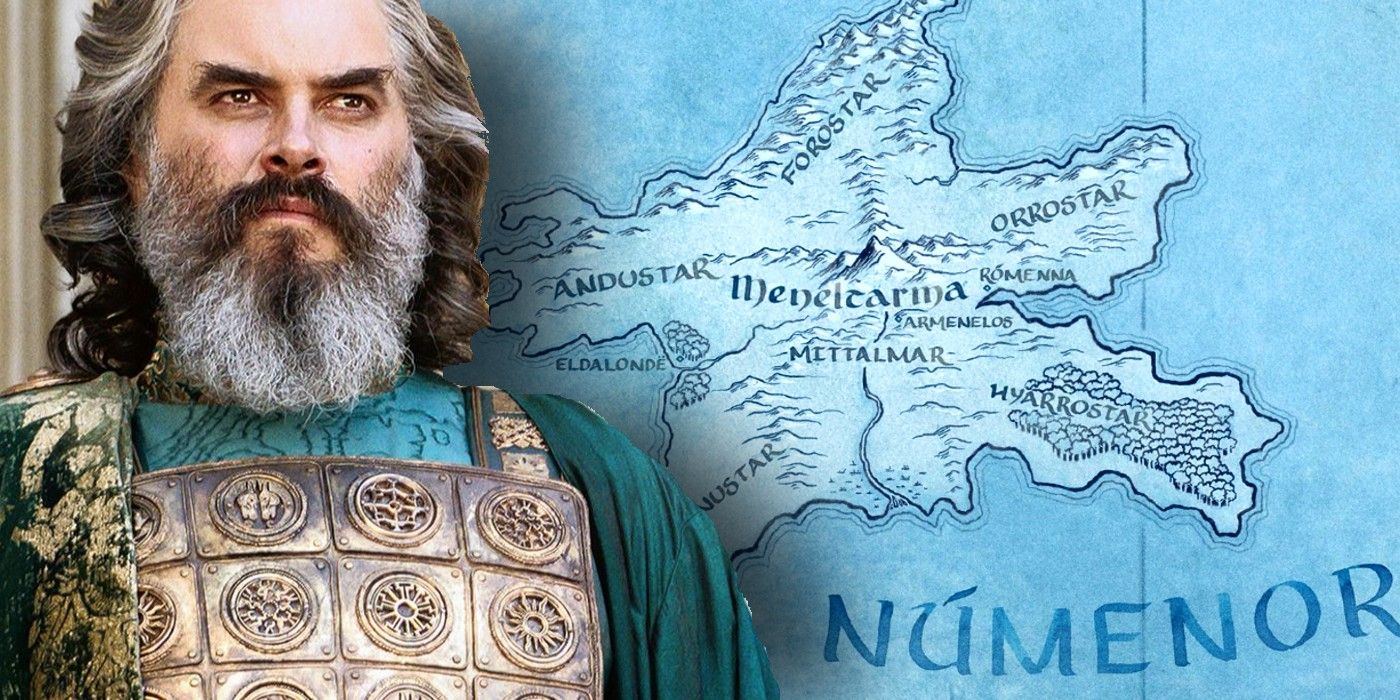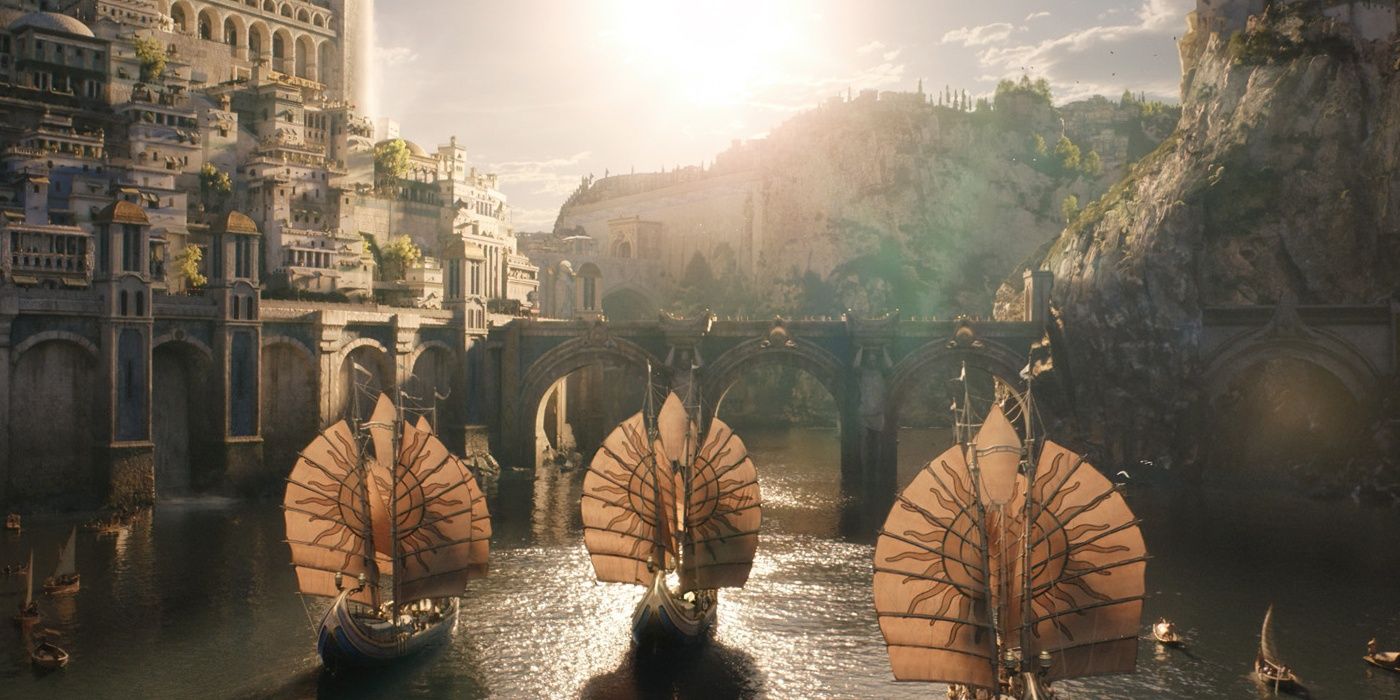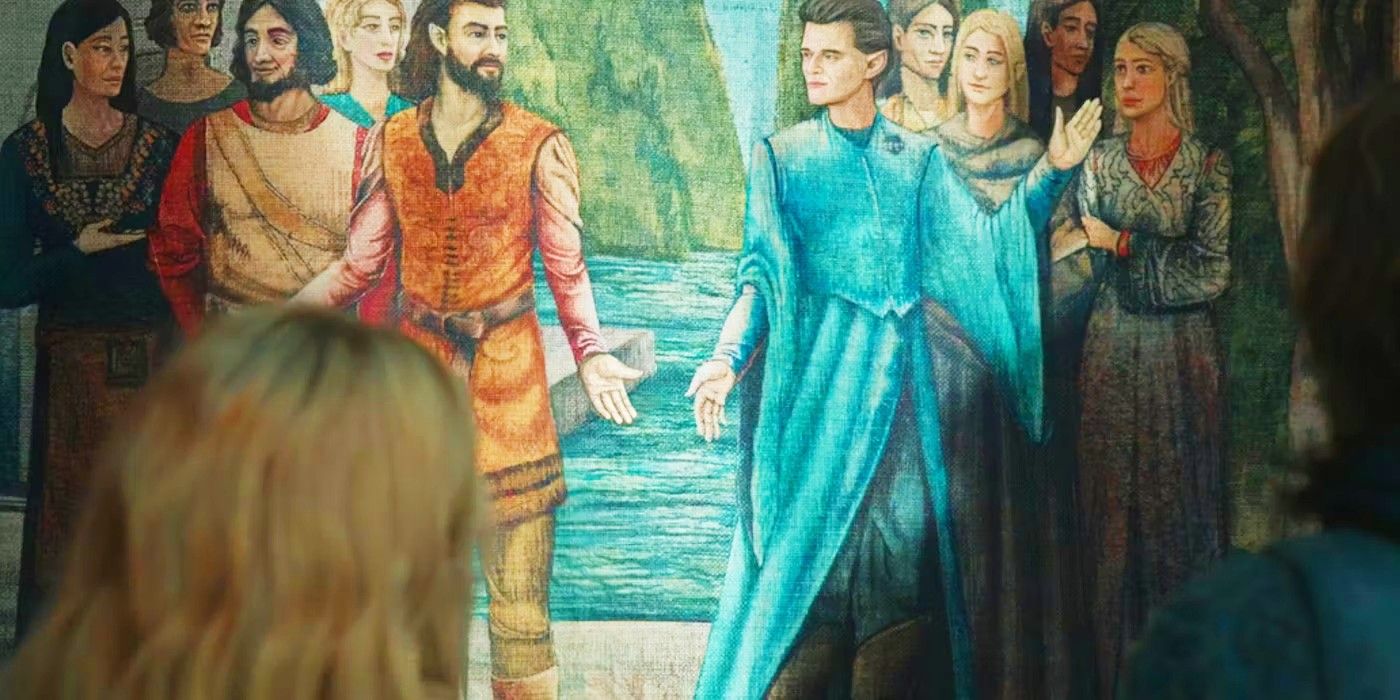The following contains spoilers for The Lord of the Rings: The Rings of Power Season 1, Episode 3, "Adar," now streaming on Prime Video.
The Rings of Power may or may not be the series that Lord of the Rings fans have been waiting for, but the Prime Video series has set itself up for success. Galadriel is an imitable hero -- even if that isn't completely accurate -- and there are a number of interesting plotlines and intriguing characters. There's even a chance that a shapeshifting Sauron has already been shown on screen just three episodes in.
Season 1, Episode 1 "A Shadow of the Past" and Season 1, Episode 2, "Adrift" were all about setting up the Second Age of Middle-earth. They introduced the series' main conflict and a litany of characters including Galadriel, Durin IV, Gil-galad and Arondir. Season 1, Episode 3, "Adar" did more of the same by introducing Elendil, Pharazôn and the complicated Númenoreans -- but it took a surprising approach by utilizing LOTR lore.
The Rings Of Power and the Origins Of Númenor
The Rings of Power has done a great job of mixing lore into dialogue, and the origin of Númenor was another example. In The Lord of the Rings, Númenor didn't exist during the First Age. It was raised out of the sea by the Valar after the War of Wrath. The island was a gift to the Edain -- the Men who chose to oppose the evils of Morgoth. After the war, the Edain followed the star of Eärendil and found what was originally called Elenna, meaning "Starwards." Eventually the star-shaped island was named Númenor.
As Galadriel and Halbrand were being led through the streets of Númenor in "Adar," Galadriel told her companion that the Valar had created the island as a gift for the Edain. Mentioning Númenor's origin wasn't completely necessary for The Rings of Power's plot, but it was appreciated by die-hard fans. If the Prime Video series is going to be successful past Season 1, it will need to continue incorporating LOTR lore because the fan base wants it to align with its source material. But that wasn't the only major reference the show made to LOTR history in "Adar."
The Rings Of Power and King Elros of Númenor
After Elendil was tasked with keeping Galadriel out of trouble, he decided to take her to the island's Hall of Lore. There, they figured out Sauron's grand plan, but they also name-dropped one of the most important figures in Numenorian history -- the first king, Elros. He was mentioned as the one who had assembled the Hall of Lore, and Galadriel was impressed. In fact, she stated that she had known him centuries earlier while looking at a painting of him and Elrond, and said he had an "uncommon spirit."
Elros was the son of the half-Elf Eärendil, along with his brother Elrond. The siblings were given a choice between an Elvish life or the life of a mortal. Elrond chose immortality and thus is a part of The Rings of Power. Meanwhile, Elros chose to be mortal. He became the first king of Númenor and took the name Tar-Minyatur -- "High-First King" in Quenya. He ruled from SA 32 to SA 442 of the Second Age and was a highly-lauded ruler. Mentioning Elros wasn't necessary for the episode either, but the fact that The Rings of Power chose to include him in its canon means that its writers are connecting back to J.R.R. Tolkien's wider universe. Hopefully, more characters from the books will be mentioned in later episodes.
The Lord of the Rings: The Rings of Power streams Fridays on Prime Video.



